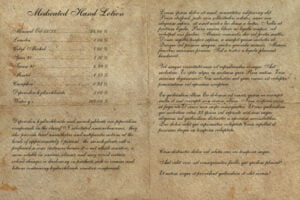Citric acid is a versatile and essential ingredient in soap making that goes beyond simply adjusting pH levels. In this blog post, we’ll delve into the use of citric acid in soap making, debunk common misconceptions, and shed light on its significant benefits.
Dispelling the Myth: Citric Acid and pH
One common misconception is that citric acid is primarily used in soap making to lower the pH to a neutral or even acidic level. While it does indeed contribute to pH adjustments, its role extends far beyond this. One important fact that we all need to ensure is that the CP or HP soap manufactured stays within its natural alkaline region with an average pH of 8.5-10. Whilst synthetic soap can go to a neutral pH soap does not. Bringing the pH lower than indicated compromises the chemical balance in the soap and you’ll end up with a bar that becomes rancid mushy and unusable in no time.
Citric Acid in Lye Solution
To harness the true potential of citric acid, it’s crucial to add it to the lye solution at the beginning of the soap making process. Adding citric acid to the lye solution at the beginning of the soap making process initiates a chemical reaction that transforms it into sodium citrate. Sodium citrate produced acts as a lye discount, effectively reducing the amount of lye in the soap recipe. This reduction increases the superfat content of the soap, which, as you may already know, provides numerous benefits, including enhanced moisturizing properties and a milder product for the skin.
Benefits of Sodium Citrate in Soap
Enhanced Emulsification:
Sodium citrate acts as a chelating agent, promoting better emulsification in your soap formula. This results in a smoother and more stable soap mixture, allowing for even distribution of ingredients.
Improved Texture and Consistency:
Sodium citrate contributes to the formation of a more homogeneous soap batter. Your soap will have a more consistent texture, which is particularly advantageous when crafting intricate designs or swirls.
Longevity and Preservation:
The presence of sodium citrate in your soap can extend its shelf life. It helps deter the formation of soap scum or soap ash on the surface, ensuring your products remain visually appealing and long-lasting.
Reduced Soap Film Residue:
Sodium citrate helps in reducing soap film residue, making the rinsing experience for end-users more pleasant and effective. This can be a significant selling point for your products.
Combating Hard Water:
If your soap consumers are in areas with hard water, the inclusion of sodium citrate can improve soap performance. It helps mitigate the effects of hard water, allowing your soap to lather more effectively.
It’s important to note that while citric acid is crucial for these benefits, the amount used should be carefully calibrated to avoid an overly alkaline or acidic final product. Proper formulation and testing are essential to achieve the desired results. The recommended addition level is between 0.5 and 2%
The Role of Sodium Citrate as a Chelator
Citric acid’s role in soap making goes beyond pH adjustment. It is an effective Chelator and as such assists to prevent rancidity in Soap. In the world of soap making, it’s important to understand the role of chelators and their significant impact on soap quality. A chelator is a substance that forms complexes with metal ions, effectively binding to them and preventing them from participating in unwanted chemical reactions. This process is crucial in soap making, where the presence of metal ions can lead to rancidity, discoloration, and reduced shelf life of the final product.
Sodium citrate, formed when citric acid is added to the lye solution, acts as a chelator in soap making. It has a remarkable affinity for metal ions, such as those found in trace amounts in water or other soap ingredients. By binding to these metal ions, sodium citrate effectively neutralizes their detrimental effects, safeguarding the quality of your soap.
Preventing Rancidity in Soap
One of the most significant benefits of using sodium citrate as a chelator in soap making is its role in preventing rancidity. Rancidity occurs when the fats or oils used in soap recipes undergo oxidation due to the presence of metal ions. This can result in an unpleasant odour / colour changes; due to the formation of harmful free radicals in the soap, reducing its shelf life and overall quality. By chelating metal ions, sodium citrate helps maintain the freshness and integrity of your soap. It prevents the oxidation of fats and oils, ensuring your soap remains stable and free from rancidity issues, which is a crucial consideration for boutique cosmetic manufacturers and soap craft home businesses seeking to offer high-quality, long-lasting products.
Calculating the Amount of Sodium Citrate in Your Recipe
To determine the precise amount of sodium citrate needed for your specific soap recipe, you’ll need to calculate the molar amounts of NaOH and KOH and adjust your citric acid accordingly. This precise addition ensures that you achieve the desired chelating effect while maintaining the appropriate pH for your soap.
As a rule of thumb:
In bar soap its suggested as 1-2% of the total oil weight used.
In liquid soap, its suggested to calculate the percentage of 0.5-1% based of the final solution and would need to calculate your total soap solution weight upfront or post dilution.
Factors of neutralisation
For CP/ HP soap 10g of citric acid can neutralize 6g of sodium hydroxide (NaOH).
for use in liquid soaps 10g of citric acid can neutralize 8g of potassium hydroxide (KOH) .
To assist with the calculation herewith find an example based on bar soap with lye (NaOH) (you must adjust for your recipe)
Citric Acid addition, Calculation example:
Total lye (NaOH) required= lye needed to saponify recipe + additional lye needed to accommodate for sodium citrate.
CP/HP Bar soap to be manufactured has 1000g oil We want to add 2% citric acid
Based on the total oil weight to create sodium citrate (without adding / adjusting for any additional SuperFat,)
=(2/100)×1000g
=0.02×1000
=20g thus add 20g of citric acid
From the factors of neutralisation above
10g of citric acid can neutralize 6g of sodium hydroxide
factor = 20g citric acid /10
=2
for every factor unit we need 6 g NaOH
=2×6
=12g NaOH
and include an extra 12g of NaOH in the lye solution.
In summary,
citric acid’s role in soap making goes well beyond pH adjustment. Its ability to form sodium citrate, act as a chelator, reduce soap scum, and preserve soap make it an invaluable ingredient for the modern soap maker. In addition when comparing citric acid to other chelators like EDTA and gluconate, citric acid stands out due to its additional benefits. Its antioxidant properties help preserve the soap’s freshness, extending its shelf life. Additionally, citric acid’s preservative qualities make it a desirable choice for soap makers aiming to create high-quality, long-lasting products.



